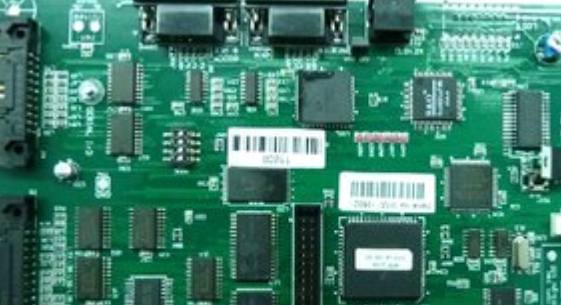
Methods of Reducing 25% Comprehensive Cost of Surface Mount Machine
1 Introduction
With the electronic manufacturing industry in the past 30 years, customers' requirements for solder paste have become increasingly high and challenging Solver paste R&D and production manufacturers are being forced to continuously develop and produce products with higher specifications and higher technical characteristics to meet and answer the two voices of the most demanding customers
One is from the production and operation department. The biggest noise is that the solder paste must be stored stably for a long time, whether in the freezer or in the reheated steel mesh, it must be consistent for a long time, whether in physical or chemical properties, in the long-term mass production process - we cannot guarantee that workers use the solder paste 100% correctly every time. Because people may make mistakes, the solder paste may still be used after expiration, and the solder paste may exceed the steel mesh. It is still in use after the service life. At this time, problems such as printing trail and low tin content appeared, but insufficient attention was paid, resulting in low tin content at the rear of SMT, uneven solder joints and unreliable pads. The gap increases significantly, the functional test solder joint fails (head restraint phenomenon), and at the end of the functional test, there are risks of potential key component failure caused by mechanical stress and thermal shock, as well as thermal shock caused by mechanical stress and thermal shock, but after passing the test at the end of the functional test, for example, solder joint failure and LGA failure of fine pitch CSP packaging, and QFN failure, It may bring significant cost difficulties and technological challenges to customers. “

The second voice is to reduce the use and cost of solder paste for each PCB pad. In the past, in the process of large-scale assembly of tens of millions of electronic products, the solder paste was limited by its own technology. At the end of this period, due to the sharp increase in viscosity, it could only be used on the mold for 6-8 hours., The workers are required to be particularly careful, and the scraper on the template must be restored in time. In this case, the customer will be affected by the amount of solder on the pad and production efficiency. If you need to obtain solder paste with longer service life on the mold on the unit PCB, it is necessary to redesign and develop a new platform and formula system to make its service life on the mold and scraper approach 72 hours and 3 days, maximize its use efficiency and obtain the lowest application process cost. In the past, the service life of solder paste was 6-8 hours, and the scrap rate was as high as 25%. Now, with a 72 hour solder paste service life, the solder paste service efficiency is close to 95%, maximizing the added value of solder paste and cost optimization.
2.1 Engineering experiment analysis
2.1.1 Printing efficiency
Solder paste sample preparation
GC10 flux formula, including SAC305 alloy solder paste
Halogen free flux: The sample was pretreated with IPC-TM-6502.3.34/EN14582 and analyzed by ion chromatography.
Classification of halogen-free flux: ANSI/J-STD-004 (version B) is used, and the activity is ROL0.
Printing conditions:
Printer: DEK EUROPA
SMT wire mesh thickness: 0.10 mm
0.80mm diameter round hole CSP
0.50mm diameter round hole CSP
0201 SMD Resistor Print Window
The printing speed ranges from 25 mm/s to 125 mm/s. The color represents the printing process index of different regions.
Printing conditions include:
Printer: DEK EUROPA
Support table: vacuum
Scraper: 250mm long, 60 degree scraper
AOI,SPI:Kohyoung,KY-8020T
Thickness of steel wire mesh: 0.10mm
0.22mm diameter round hole size CSP
0.20mm diameter round hole size CSP
0.18mm diameter round hole size CSP
And 0.15mm diameter round hole size CSP
0201 SMD Resistor Print Window
The printing speed ranges from 25 mm/s to 125 mm/s. The color represents the printing process index of different regions.
The experimental results show that GC10 solder paste containing No.4 powder can be used for 0201, 01005 and CSP solder with equal spacing of 0.4mm and 0.3mm. The printing capacity can be guaranteed, but the appropriate printing parameters must be adjusted, such as the appropriate printing speed and pressure. Sometimes, the appropriate release speed is adjusted according to the special design of the part liner.
For the DOE analysis of release speed, 0.18mm round hole is used for printing, and three release speeds are selected: fast (20mm/s release speed), medium speed and slow speed, ranging from 0.18mm to 0.80mm round hole. The inner hole printing capacity CPK of No. 4 powder with different circular hole printing capacity was obtained, and the conclusion that fast release speed was the first choice was drawn.
2.1.2 Print the actual laboratory quality
Print parameters:
Printing speed: 250mm/s
Printing pressure: 8kg
SMT stripping speed: fast stripping
Scraper length: 250mm
Working parameters:
Thermal collapse: J-STD-005A, IPC TM 650 2.4.35, conduct collapse assessment for 10 minutes at 182 degrees, and record the first bridge free distance.
2.1.3 Reflow efficiency after continuous long-term PCB printing
2.1.4 Viscosity life test
Test conditions:
Experimental equipment: Malcom TK1 viscosity tester
Preload 300g
Preload time 5 seconds
Test speed 2.5mm/sec
Test solder paste diameter 5.1 mm
Test solder paste thickness 0.25 mm
The above is the explanation given by the editor of pcb circuit board company.
If you want to know more about PCBA, you can go to our company's home page to learn about it.
In addition, our company also sells various circuit boards,
High frequency circuit board and SMT chip are waiting for your presence again.









